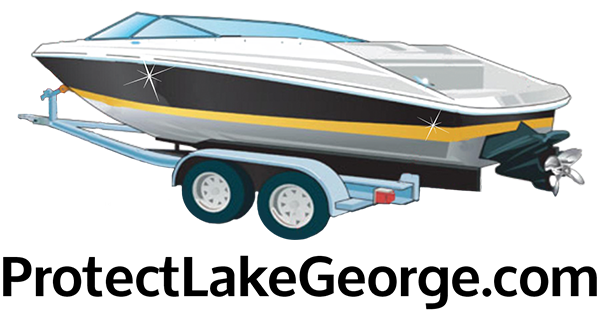Invasive yellow flag iris taking over a wetland in Fort Ann.
FAQ
Frequently Asked Questions Related to Lake George and AIS
What are invasive species?
What are Aquatic Invasive Species?
What AIS are in Lake George?
How do AIS spread?
How do we protect Lake George from AIS?
What is the Mandatory Boat Inspection and Decontamination Program?
What are invasive species?
Invasive species are non-native species that can cause harm to the environment or to human health. As a threat to our biodiversity, they have been judged second only to habitat loss. Invasives come from all around the world, with the rate of invasion increasing along with the increase in international trade that accompanies globalization. Click here to learn more about invasive species.
What are Aquatic Invasive Species?
Often called AIS for short, Aquatic Invasive Species are non-native plants, animals, or pathogens that threaten native plants, wildlife, and their habitat. They also affect humans by degrading boating and fishing areas and reducing lake shore property values and tourism. Once AIS are established, eradication is almost impossible and management programs are very expensive. Spread prevention is the most cost-effective option for protecting our lakes.
What AIS are in Lake George?
Lake George currently has six known AIS: Eurasian watermilfoil, curly-leaf pondweed, zebra mussels, spiny water flea, Chinese mystery snail, and Asian clam. There are many more AIS that have already invaded other lakes close by, such as alewife and hydrilla. Boats travel between these lakes and Lake George, creating pathways for AIS to spread. Click here to learn more about the AIS found in Lake George.
How do AIS spread?
One of the main pathways of spread of AIS is recreational boating. Boats, trailers, and equipment moved from lake to lake are at high risk of transporting AIS.
There are however many other possible pathways for the spread of AIS. AIS can spread from lake to lake through connected waterways, such as canals and rivers. They can also be spread by waterfowl. There are also intentional introductions for food, recreation, or other cultural reasons, or the dumping of an unwanted fish tank or releasing an unwanted pet.
How do we protect Lake George from AIS?
The best way to protect Lake George is to prevent new AIS from reaching the lake. And the best way to do this is to make sure that all boats, trailers, and equipment are CLEANED, DRAINED, and DRY before going into the lake.
It is important to never release a plant or animal into a body of water unless it came from that body of water. So please do not dump your fish tank if you are tired of feeding your fish! Many of the worst aquatic invasive plants we are battling in our lakes now are sold for fish tanks!
What is the Mandatory Boat Inspection and Decontamination Program?
All trailered vessels must be inspected prior to launching on Lake George. The Lake George Park Commission’s Mandatory Boat Inspection Program, which started in 2014 following 5 years of a voluntary program run by the LGA, requires boats to undergo an inspection at one of the regional inspection stations located around the lake. The purpose of the inspection is to ensure that boats and trailers are clean, drained, and dry and are harboring no invasive species. There is no cost to boaters for inspections, or the washing of the boat and trailer if determined necessary by an inspection technician. Click here for more details on the program and how it works.
For more details on invasives in Lake George and the threat, visit the LGA’s website.
